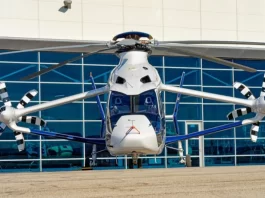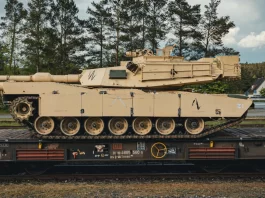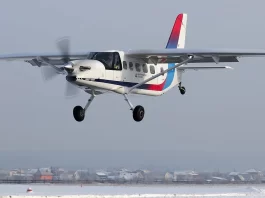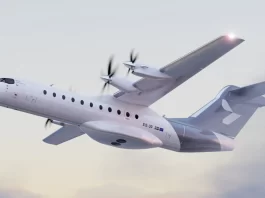The largest aircraft in the world completed its first “captive carry” test towing a hypersonic vehicle, which the manufacturer describes as a “significant” step towards the Mach 5-capable vehicle’s first autonomous flight.
December 3 marked the maiden successful flight of Stratolaunch’s Roc carrier aircraft with a fully fueled-up Talon-A hypersonic vehicle slung beneath its massive central fuselage. Stratolaunch, headquartered in Seattle, made the announcement.
The liquid-propellant rocket engine supported by Talon-A’s propulsion system provides the necessary thrust for the spacecraft to attain hypersonic velocities.
Zachary Krevor, CEO of Stratolaunch, stated in the announcement that while the company has conducted several successful ground tests fueling and igniting the system, it needed to evaluate the system’s performance in the flight environment before release.
He added that preliminary results from today’s flight indicate that the system performed as anticipated and that the next course of action will be determined pending a comprehensive review of the test data.
Throughout the flight’s three hours and twenty-two minutes, the Talon-A’s rocket engine “operated as anticipated” while remaining affixed to the Roc mothership. The most recent test of the two aircraft conducted by Stratolaunch was a drop test in May, which numbered twelve.
With a wing span of 385 feet, the Roc is the largest still-flying manned aircraft in the world and one of the largest of any form of flying machine ever created by humans. Despite having the most expansive wing extent of any aircraft in history, measuring 20 feet in length, which is equivalent to the height of a Saturn V rocket, it remains only about half the length of the Hindenburg and other enormous lighter-than-air airships that were used for travel in the late 19th and early 20th centuries.
The mothership and test vehicle bear a vague resemblance in design to the White Knight of Virgin Galactic. It hoists two motherships and the SpaceShipTwo suborbital spacecraft in preparation for launches from high altitudes.
The organisation stated that it must examine the data from Saturday’s flight before determining its next course of action but that a Talon-A full-power test flight is anticipated “within the coming year.” Reportedly, the aircraft has the potential to attain Mach 6, which is equivalent to three times the velocity of contemporary fighter aircraft.
Nevertheless, such an experiment would not be the first manned hypersonic vehicle flight: in 1967, a North American X-15 rocket plane accomplished Mach 6.7 during a test flight from a B-52 Stratofortress carrier aircraft. Furthermore, NASA Space Shuttles routinely attained Mach 25 during atmospheric reentry before the 2011 retirement of the final spacecraft.
Stratolaunch, a subcontractor for Leidos and Dynetics, has signed flight contracts with the US Air Force Research Laboratory and the US Navy’s Multiservice Advanced Capability Test Bed (MACH-TB) programme, in addition to advancing construction of the Talon-2 and Talon-3 vehicles.
Decades have elapsed since the Pentagon last attempted to produce a hypersonic weapon or vehicle of practical capability, falling behind competitors such as China and Russia, which operate multiple weapons exceeding Mach 5. Present-day methods for intercepting or tracking hypersonic weapons are rendered nearly ineffective due to their exceptional velocity and manoeuvrability.






